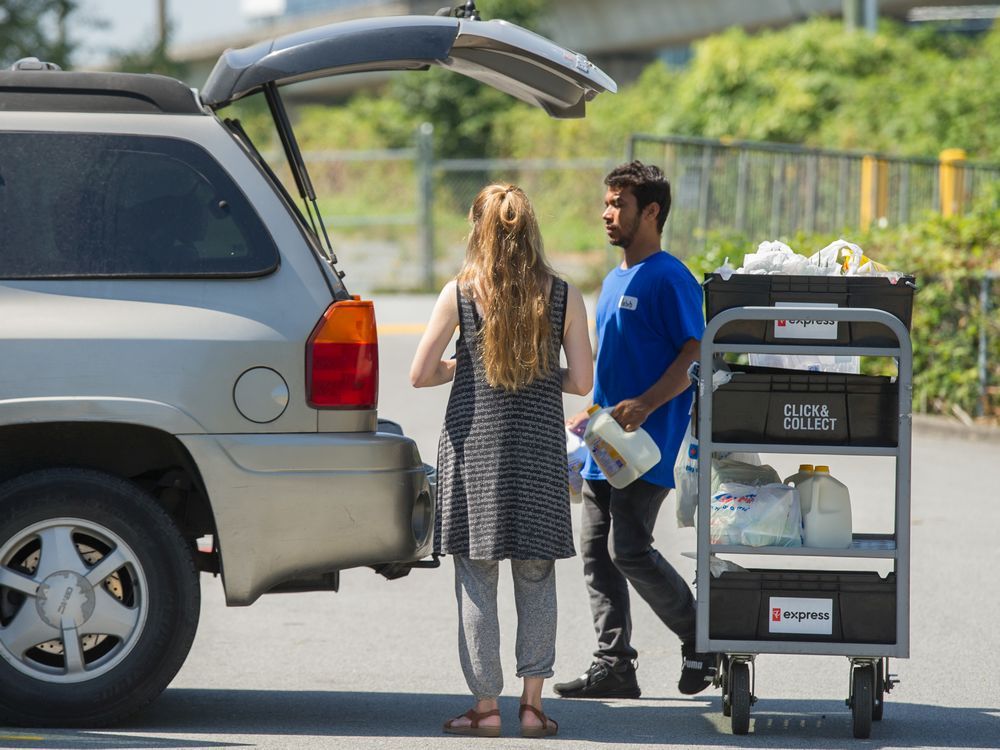Canada's online grocery market poised for major expansion

Credit to Author: Zak Vescera| Date: Fri, 09 Aug 2019 19:42:17 +0000
More Canadians are buying their groceries online, signalling a market shift with a potentially broad impact on real estate, consumer behaviour and an already highly consolidated grocery market.
While Canada’s online grocery market lags significantly behind the United Kingdom and the United States, aging baby boomers and convenience-seeking millennials are driving major chains to rework their supply chains.
Prof. Sylvain Charlebois, director of the Agri-Food analytics lab at Dalhousie University, says online grocery shopping in Canada only has a penetration rate of around two per cent, compared to the U.S. at three per cent and the U.K. at over seven per cent.
But he says competition from online retailers and double-digit growth in demand is pushing established supermarket chains to close physical outlets in favour of broadening their online reach.
“It’s the Amazon effect,” he said. “That was the wake up call for grocers — before that they were just scared of losing business, now they’re all doing it, too.”
Julian Gleizer is the CEO of Inabuggy, a Toronto-based courier service that uses professional shoppers pick up food according to client orders.
Gleizer conceived of the company in 2014 when he was balancing “16-hour days” with caring for his ailing father, meaning he had no time to purchase groceries himself.
“There was no way for me to get his daily essentials and goods over to him,” he said.
He says it highlights the two demographic factors driving the market — an aging population with less mobility and a young, overworked population wanting to “buy back time.”
Since then, the company has expanded across the country, and Gleizer says its only a matter of time before the Canadian demand for online shopping reaches levels experienced in other countries.
In the United States, the rise of online shopping has created a squeeze on cold storage warehouse spaces as meal-prep services, online grocers and couriers jockey for limited space.
CBRE, a Los Angeles-based real estate firm, estimates the U.S. will need another 100 million square feet of cold storage over the next five years. In Canada, the firm estimates that the amount of refrigerated warehouse space growth has grown 9.1 per cent since 2014 and says vacancy rates are near zero.
If Canada’s online grocery use were to reach U.K. levels, CBRE estimates it would need another 12.5 million square feet of warehouse space — but observers say the country will likely avoid a cold storage crunch even if demand rises.
Peter van Stolk, the CEO of Vancouver-based organic food delivery company Spud, says grocery chains can rely on their existing cold storage space rather than building warehouses.
“We’re the only online grocery fulfilment centre in Western Canada,” he says. “Everyone else is using existing legacy assets, including their refrigeration.”
Charlebois says relative to the U.S., Canada’s grocery market is an “oligopoly” where a small number of firms control the market — largely due to Canada’s size and low density.
He says online shopping will likely drive those firms to pursue use of third-party courier services, expanding food processing operations and converting superstores into warehouse spaces to supplement deliveries.
“That urban distribution game is even more critical in Vancouver and Victoria than anywhere else, with the exception of perhaps the GTA,” he said. “Once customers get addicted to the convenience of buying online, I don’t think there’s any turning back.”